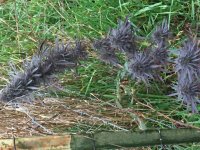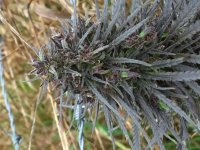Thcvhunter,
might really be!
good thought.. would be interesting what kiona would say(He grows Outdooronly and makes it commercially aviable)
I mean he survives as mostly equatorial sativas seller, and he grows outoor where? i dont know exactly, but i bet he automatically chooses Strians as sellable wich also survive the northern roughness, but still provide the most possible Sativaexperience..i said most.
I could imagine that the most brilliant gem wouldnt become commercially aviable as outddoorweed, cause it doesent develop good. I could imagine the opposite too. The vigourus wonder, wich we just see even more rare, than even a pure Landrace.
One that Thcvhunter may have in his Garden..
Zamalito is East of the Cascades.
Im on the West.
Totally different environment.
He is high mountain desert and Im rainforrest.
Both are ~45°N
It was real nice growing in Napa last year.
I couldve flowered into the next Spring there.





